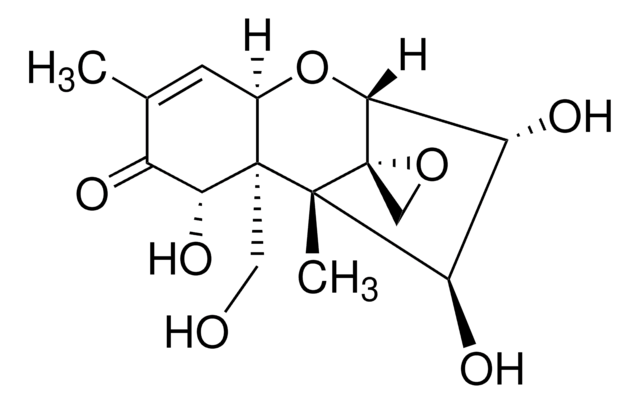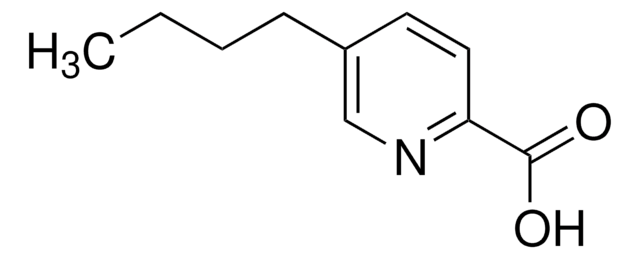IRMM316
Nivalenol in acetonitrile
IRMM®, certified reference material
Synonym(s):
Nivalenol solution, 3α,4β,7α, 15-Tetrahydroxy-12,13-epoxytrichothec-9-en-8-one, NIV
About This Item
Recommended Products
grade
certified reference material
Agency
IRMM®
manufacturer/tradename
JRC
application(s)
general analytical
format
matrix material
SMILES string
[H][C@]12O[C@]3([H])[C@H](O)[C@@H](O)[C@@](C)([C@]34CO4)[C@@]1(CO)[C@H](O)C(=O)C(C)=C2
InChI
1S/C15H20O7/c1-6-3-7-14(4-16,11(20)8(6)17)13(2)10(19)9(18)12(22-7)15(13)5-21-15/h3,7,9-12,16,18-20H,4-5H2,1-2H3/t7-,9-,10-,11-,12-,13-,14-,15+/m1/s1
InChI key
UKOTXHQERFPCBU-XBXCNEFVSA-N
Looking for similar products? Visit Product Comparison Guide
Analysis Note
IRMM316
Legal Information
Signal Word
Danger
Hazard Statements
Precautionary Statements
Hazard Classifications
Acute Tox. 4 Dermal - Acute Tox. 4 Inhalation - Acute Tox. 4 Oral - Eye Irrit. 2 - Flam. Liq. 2
Storage Class Code
3 - Flammable liquids
WGK
WGK 2
Flash Point(F)
35.6 °F - closed cup
Flash Point(C)
2.0 °C - closed cup
Choose from one of the most recent versions:
Certificates of Analysis (COA)
Sorry, we don't have COAs for this product available online at this time.
If you need assistance, please contact Customer Support.
Already Own This Product?
Find documentation for the products that you have recently purchased in the Document Library.
Our team of scientists has experience in all areas of research including Life Science, Material Science, Chemical Synthesis, Chromatography, Analytical and many others.
Contact Technical Service







